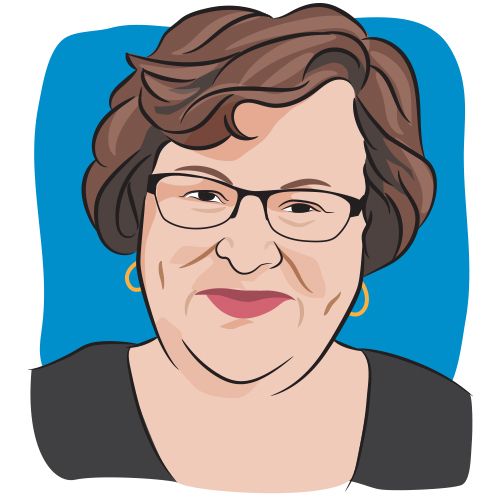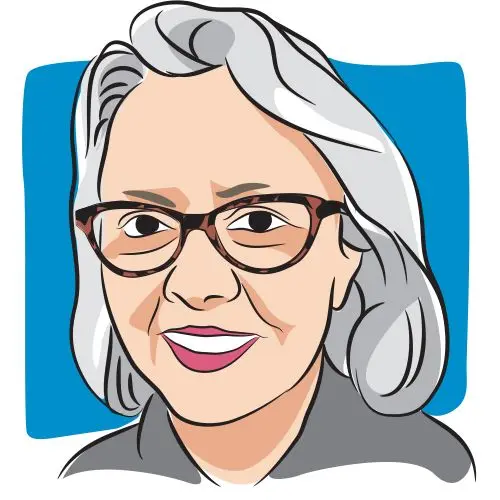Article
Expert Discusses the Changing Landscape of Mantle Cell Lymphoma Treatment
Author(s):
Peter Martin, M.D., discusses the evolving field of mantle cell lymphoma treatment.
Researchers are anticipating novel combinations to improve care in the treatment of mantle cell lymphoma (MCL) as the treatment paradigm continues to shift.
“We have many treatments in the pipeline and it will be a matter of learning how to combine them once we have identified which patient populations can benefit,” explains Peter Martin, M.D.
Can you discuss the key points from your presentation on MCL?
Is there a certain treatment regimen that more patients prefer over another treatment type?
Martin, an associate professor of Medicine and the chief of the Lymphoma Program at Weill Cornell Medicine, lectured on MCL at the 2017 OncLive® State of the Science Summit on Hematologic Malignancies. In an interview, he discussed the evolution of treatment and ongoing research for patients with MCL.First, oncologists need to consider their patient’s wishes when treating MCL. It’s important to recognize that we may or may not be able to impact patient outcomes directly through our choice of therapy but we can certainly impact their quality of life during therapy.There are many regimens in MCL that are efficacious, but that patients don’t necessarily want. There are intensive regimens, such as high-dose cytarabine followed by autologous stem cell transplant, which can potentially induce remission durations of a decade.
The challenge is that it requires these patients to frequently take six months off of work. Often times, we are treating patients who are in their early 60s who might not be willing to do that. I think they would prefer to receive treatments that are broadly applicable and available in the community setting.
What role do you think transplants are going to have as the field evolves?
What are some of the most common side effects that patients are more likely to see with autologous stem cell transplants?
What ongoing trials are you excited to see the results of?
Do you think immunotherapy or CAR T-cell therapy will have potential?
I think, as researchers, we owe our patients regimens that are more broadly applicable but that don’t compromise on that efficacy. For patients who can tolerate intensive therapy who want a very long remission duration or a long treatment-free interval, high-dose cytarabine induction followed by an autologous stem cell transplant is the best way to achieve that. There is clearly a group of patients who should and can receive autologous stem cell transplant, but there are also many more patients who can do very well without receiving an autologous stem cell transplant. The difference being that they will probably need to receive more therapies over that same time interval. Our transplant team is getting better at helping these patients through the autologous stem cell transplant procedure. Nonetheless, there is clearly fatigue and a risk of infection that can sometimes be serious, but we’re continuously getting better at controlling those infections. As patients get older, those infections can have more of an impact. There is clearly a small but significant risk of secondary neoplasm myelodysplastic syndrome acute myeloid leukemia that appears to be related to cumulative exposure to chemotherapy. I think the upcoming NCTN studies in MCL are going to be very important. One of the studies, which focused on Treanda (bendamustine) and Rituxan (rituximab) alone versus Treanda and Rituxan plus cytarabine, will potentially define a new induction therapy in younger patients. That trial is currently in the planning stages but hopefully it will go forward. The other study will define whether or not patients with the eradication of minimal residual disease following induction actually need a stem cell transplant. There may be a significant group of patients who don’t need a stem cell transplant to do as well as those patients receiving maintenance with Rituxan. Immunotherapy has been around for a long time with MCL, but when we talk about the modern era of immunotherapy with immune checkpoint inhibitors, it hasn’t been well tested yet. Small trials have suggested that they have limited efficacy, but it may be that they are not being used in the right way to give them the best chance at working.
What do you envision the treatment landscape of MCL looking like in the next few years?
CAR T-cell therapies and active immunotherapies are attractive in MCL because they offer a potentially curative approach. Just like allogenic stem cell transplant offers a curative approach, CAR T-cell therapy can potentially cure MCL. There is the ongoing ZUMA-2 trial from Kite Pharma that will evaluate anti-CD19 CAR T-cell therapy in patients following Imbruvica (ibrutinib) failure. If that is shown to be feasible, we’ll likely see it move up in younger, higher-risk patients.We’re likely to recognize that MCL is a heterogeneous disease. There are some patients who have slow-growing indolent disease or aggressive disease and need a completely different approach than anything we’ve been offering previously. There are some patients who have slow-growing lymphomas but don't benefit from chemotherapy and those patients probably need a different non-chemotherapy—based approach.
First of all, we’ll recognize that there are different groups of patients and they can all be managed differently to maximize their quality of life and potentially extend their survival. Fortunately, we have many treatments in the pipeline and it will be a matter of learning how to combine them once we have identified which patient populations can benefit.




